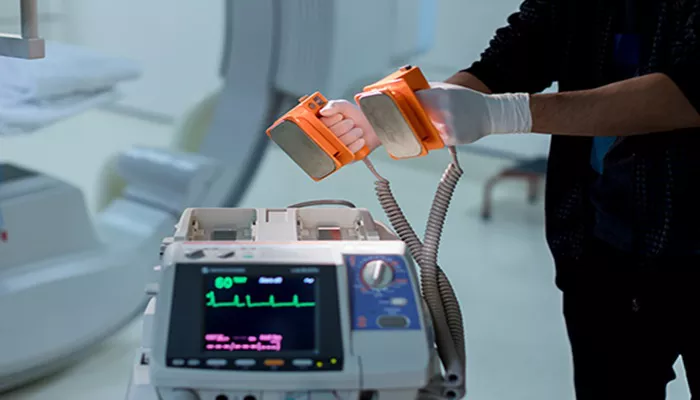Defibrillation is a critical medical procedure used to treat life-threatening heart rhythm disturbances. As a cardiovascular cardiologist, I will explain in detail what defibrillation is used for, how it works, and why it is essential in emergency cardiac care.
What Is Defibrillation?
Defibrillation is the process of delivering a controlled electric shock to the heart to stop an abnormal and dangerous heart rhythm, allowing the heart to reset and resume a normal rhythm. This procedure is primarily used in cases of severe cardiac arrhythmias such as ventricular fibrillation (V-Fib) and pulseless ventricular tachycardia (V-Tach), which occur in the heart’s lower chambers, the ventricles.
Why Is Defibrillation Needed?
The heart relies on a coordinated electrical system to pump blood effectively. When this electrical system malfunctions, it can cause arrhythmias—irregular heartbeats that may be too fast, too slow, or chaotic. Some arrhythmias, like ventricular fibrillation and pulseless ventricular tachycardia, are immediately life-threatening because they prevent the heart from pumping blood, leading to cardiac arrest.
Ventricular Fibrillation (V-Fib): The heart’s electrical signals become chaotic, causing the ventricles to quiver ineffectively rather than contract properly. This stops blood flow to vital organs.
Pulseless Ventricular Tachycardia (V-Tach): The ventricles beat very fast but without effective pumping, resulting in no pulse or blood circulation.
Defibrillation is used to treat these arrhythmias because it can interrupt the chaotic electrical activity and allow the heart’s natural pacemaker, the sinoatrial (SA) node, to re-establish a normal rhythm.
How Does Defibrillation Work?
The electric shock delivered by a defibrillator depolarizes a critical mass of heart muscle cells simultaneously. This stops the irregular electrical impulses causing the arrhythmia. After the shock, the heart cells enter a brief refractory period during which they cannot be re-excited. This pause allows the heart’s natural pacemaker to regain control and restore a normal heartbeat.
The exact mechanism involves:
Forcibly depolarizing heart cells to halt chaotic electrical circuits.
Interrupting re-entrant circuits that sustain arrhythmias.
Allowing the sinoatrial node to resume normal pacing of the heart.
When Is Defibrillation Used?
Defibrillation is indicated only in specific life-threatening arrhythmias:
- Ventricular Fibrillation (V-Fib)
- Pulseless Ventricular Tachycardia (V-Tach)
It is not used for other types of cardiac arrest rhythms such as asystole (flatline) or pulseless electrical activity (PEA), where the heart has no electrical activity or ineffective electrical activity without a pulse. In these cases, cardiopulmonary resuscitation (CPR) and medications are the main treatments.
Defibrillation is also not used if the patient is conscious or has a pulse, as inappropriate shocks can cause dangerous arrhythmias.
Types of Defibrillators and Their Uses
Automated External Defibrillators (AEDs): Portable devices found in public places that automatically analyze heart rhythm and advise or deliver shocks. They are designed for use by laypersons with minimal training and provide voice and visual instructions.
Manual Defibrillators: Used by healthcare professionals who interpret the heart rhythm and deliver shocks accordingly.
Implantable Cardioverter Defibrillators (ICDs): Devices surgically implanted in patients at high risk for sudden cardiac arrest. They continuously monitor heart rhythm and deliver shocks internally when needed.
The Role of Defibrillation in Cardiac Arrest
Sudden cardiac arrest (SCA) occurs when the heart suddenly stops pumping effectively, often due to ventricular fibrillation or pulseless ventricular tachycardia. Defibrillation is the only effective treatment to restore a viable heart rhythm in these cases.
Immediate defibrillation significantly improves survival chances.
Defibrillation is most effective when performed as soon as possible after the onset of the arrhythmia.
CPR is critical to maintain blood flow until defibrillation can be performed.
Practical Considerations in Defibrillation
Electrode Placement: Proper placement of defibrillator pads or electrodes is crucial for effective shock delivery. Common placements include anterior-posterior and anterior-apex positions.
Safety: Before delivering a shock, rescuers must ensure no one is touching the patient to avoid accidental injury.
Multiple Shocks: Sometimes several shocks are necessary, with CPR continued between shocks to support circulation.
Outcomes And Importance
Survival rates after cardiac arrest vary but are generally low without defibrillation. For patients with shockable rhythms, survival rates range from 21% to 50%, much higher than for non-shockable rhythms.
Defibrillation is a cornerstone of advanced cardiac life support and has saved countless lives worldwide. Its availability in public spaces through AEDs has made prompt treatment possible even before emergency medical services arrive.
Conclusion
In summary, defibrillation is a life-saving intervention used to treat dangerous ventricular arrhythmias by delivering an electric shock to reset the heart’s rhythm. It is essential for managing sudden cardiac arrest caused by ventricular fibrillation and pulseless ventricular tachycardia. Timely defibrillation, combined with CPR, offers the best chance for survival and recovery in these critical emergencies.
Related topics:


